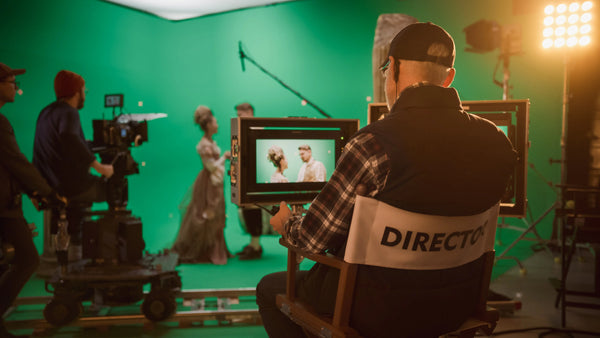
Do I need a field monitor for video?
(TLDR; the answer is probably yes!)
Photography, stills or video, is about capturing light to create a scene worthy of attention, something that connects with and draws in the audience.
If you are serious about video, or stills, either professionally or as a hobby, a field monitor should be on your essential list.
Why?
1. Size

Our eyes are good, but when it comes to the LCD screen on most cameras, they can’t always see issues without the various built-in tools flashing away, and they often crowd the screen. Bigger is be better for a host of reasons, but mainly a larger screen allows for attention to composition, exposure, focus, and the information that is displayed about these and more.
Which size? This depends on how far away you are going to be, and whether you want it on-camera/rig or static remote.
You’ll see camera operators with smaller monitors on-camera or rig at an angle that suits them for the shot, and directors are seen sitting back from the action and concentrating on larger static monitors and what will be, hopefully, the final result. Better to capture it well than try and fix in post production.
2. Viewing angles

The value of comfortable viewing angles with distance and perspective shouldn’t be underestimated. To have the time and comfort to focus (pardon the pun) on what you’re capturing will help find a slightly better framing.
3. Focus

You have autofocus and possibly focus peaking. However, there’s a huge difference between autofocus and focus pulling, and between focus peaking on a small viewfinder or LCD and that of a larger, often brighter, monitor. Many monitors also include the ability to change focus peaking colour, or options such as heightening the contrast further using a monochrome view of everything but the in-focus edges.
Also, focusing-assist is often difficult in low contrast scenes, so a larger monitor with built-in magnification is an incredibly useful option to assist our evolutionarily simple and easy-to-fool eyes.
4. Exposure

Exposure assist such as waveforms, false colour, or zebras improve on the built-in information on the camera LCD, and are easier to comprehend on a larger display, ensuring you don’t crush blacks or blow highlights. Choose what works for you, which may change on any given scene.
(Monitors with brightness levels of 400 nits allow you see pretty much everything under normal daylight viewing.)
Summary
A field monitor allows you to check in much more detail that the lighting, focus, exposure and overall image/composition are correct with its built-in tools, saving a ruined shot and maybe a huge amount of time, effort, and money. The size and features will depend on your particular needs and usage, and with the inputs/outputs you need to complement your camera and audio system. Not all cameras output their video.
You’ll feel more in control, reduce bad shots; and look/feeling more professional is also not to be underestimated.
At TARION we aspire to offer the best value for money on all our products, so even our budget X5 field monitor, pictured, and on sale, has 14 5* reviews and features:
- Focus Peeking – a valuable tool using coloured lines to see exactly what’s in focus.
- 460cd /m² brightness (460 nits).
- False Colour – helps you read the exposure value of an image, very similar to Zebras or a histogram.
- Histogram – similar to the standard in-camera histogram.
- Exposure prompt.
- HDMI Looping to output into another HDMI device.
- Audio levels
- …and many other useful features.
At TARION we have a mission to offer the best quality products at a fair price for amateur enthusiasts and professionals through innovative designs, quality materials, and our relationships with manufacturers to ensure the quality of our products; all backed by our excellent customer service and support.
There are larger and more fully featured monitors to suit almost every need and budget. Take a look at our range of monitors, and view perhaps take a look at our range of products while you’re there.



